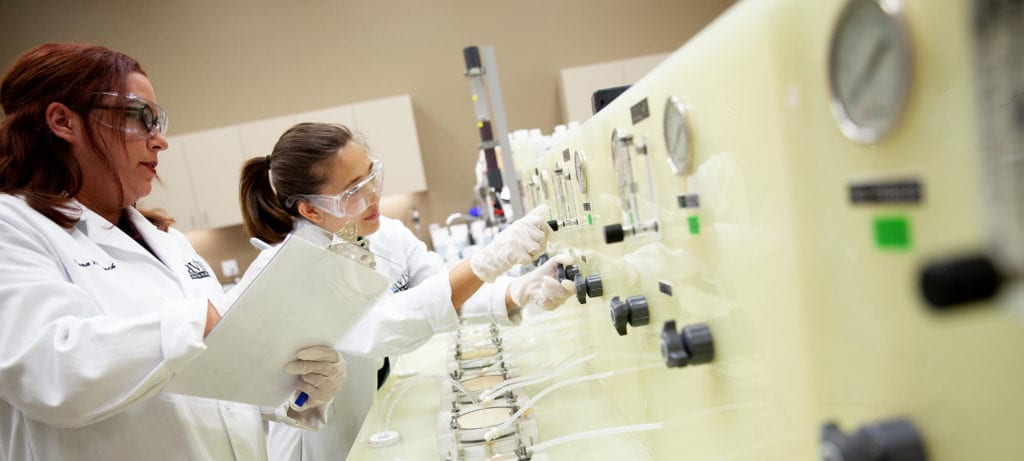The Growth of Reverse Osmosis Systems – What is Reverse Osmosis and How it Can Help You
Clean water is the very cornerstone of life and economic development. As the world’s population and economic activity grow, so does the need for a sustainable supply of clean water. Only 3% of the world’s water is freshwater, and two-thirds of that is in polar ice and glaciers. While considering extreme drought conditions and major global storm events, these limited water resources are not sufficient to support population development and environmental needs. The World Wildlife Fund reports that more than 1 billion people worldwide lack access to water, more than 2.5 billion people experience water scarcity for at least one month of the year, and by 2025, 50% or more of the world’s population may face water shortages from time to time.
Consequently, several alternative water sources are being identified to preserve dwindling freshwater sources. Sea water, groundwater, brackish water desalination, and water reclamation are becoming more affordable and prevalent to ensure continued uninterrupted supply to communities and businesses, and supplement rivers, aquifers, and restore wetlands.
Reverse Osmosis (RO) separation is the most cost-effective and efficient technology underpinning the use of water from these alternative sources and has the greatest advantage of being scalable from household- to city-wide levels.
Unlike traditional filtration methods that use screens or filters to extract particles from the feed water, RO is a pressure-driven process that uses a semi-permeable membrane and the principles of crossflow filtration. The RO membrane is designed to prevent the passage of salts and organic molecules above a certain size (an approximate molecular weight greater than 100 Dalton). This means that an RO membrane can efficiently remove water contaminants including bacteria, agricultural chemicals, nitrates, sugars, dissolved salts, and metal ions.
How Does Reverse Osmosis Work?
Osmosis is the natural tendency of a fluid to equalize the concentration of its components, specifically the contaminants such as dissolved salts on either side of a permeable or semipermeable membrane.
During osmosis, the lower-concentration solution will flow through the semipermeable membrane into the higher-concentration solution in an attempt to reach equilibrium, i.e. to have equal salt concentrations on both sides of the membrane. The dissolved salts cannot pass through the membrane, so the concentration changes are only due to the changes in flow.
As the volume of solution on the higher-concentration side increases, pressure on that side rises until it is high enough to hinder the flow across the membrane. This phenomenon is the osmotic pressure.
With the goal of water treatment being to separate the water from as much of the salts as possible, the osmosis process must be ‘reversed’. A high pressure that exceeds a system’s osmotic pressure is applied to force the higher-concentration solution (the feed water) across the semipermeable membrane to create the RO permeate or purified water. This leaves the dissolved salts behind in a concentrated stream, called the brine or the reject water.
The Anatomy of a Reverse Osmosis Membrane
In general terms, a reverse osmosis membrane has three layers:
The first layer is a strong support layer, either from polyester (PET) or polypropylene (PP).
The second layer is an adhesive bonding layer, typically made of polysulfone (PSF).
Lastly is the layer that performs the separation, which is made of polyamide (PA).
RO membrane manufacturers can make small changes to the polyamide chemistry to vary the membrane’s properties. This allows some flexibility because of the wide variance in source water quality and temperature. This means that the RO system designers can select the appropriate membranes for the desired water passage through the membrane, the salt rejection, and the operating feedwater pressure that must be applied.
The RO manufacturers have standardized on certain sizes of RO membranes, typically 8-inch and 4-inch diameter membranes and pressure vessels, to allow for product interchangeability. The membrane geometry that gives the greatest surface area and the highest RO permeate production within its diameter is the spiral-wound module type. This module also enables relatively easy pipe plumbing for the separate brine concentrate and the purified permeate streams.
The phrase “thin-film composite” describes the combination of these layers to form the integrated RO element as a whole.
Reverse Osmosis Within a ‘Treatment Train’
Proper pre-treatment of the feed water is necessary to protect RO modules from damage. The pre-treatment varies depending on the application and will have both physical and chemical components. RO separation generally follows after pH correction and a granular media filter, an ultrafiltration membrane, or a sediment filter, and lastly a cartridge filter to protect equipment. Avista has a range of chemicals that can improve performance and reliability through each of these pre-treatment steps.
For certain applications, such as for drinking water production, there are additional treatment steps after RO separation; for example, calcium carbonate is added to the permeate, an activated carbon filter will be used for taste and odor improvements, and then, a disinfection step for removing viruses and pathogens.
What is Crossflow Filtration?
In practice, a high-pressure pump continuously pumps feed water into the membrane element of an RO water treatment system to maintain a suitable operating pressure. The velocity of the feedwater and the permeate assists to keep the surface of the membrane clean from salts and solids and biological matter, but is insufficient on its own. There will always be a build-up of material on the membrane surface with use over time.
With a partially blocked surface area of the membrane, the permeate water production drops, and the feed water pressure must be increased more and more to compensate. Increasing the operating pressures severely increases energy costs, and risks damaging the membrane surface.
Therefore, it is imperative to keep the membrane surfaces as clear of material build-up as possible to maintain safe, effective, and low-energy operation.
Different Operational Challenges in an RO System
Much like the membranes, the resulting RO element can be constructed in a variety of configurations, depending on the specific application and the desired performance profile.
For example, when RO elements are used for seawater desalination, consideration must be given to the effective management of fouling caused by the build-up of salt primarily. When RO is used for wastewater reclamation or brackish water purification, biological fouling is more prevalent, because the salt and dissolved solids are much lower than in seawater. The selection of the appropriate RO membrane and its customized cleaning strategy to maintain reliable service is therefore directly linked to the water quality of the application.
The range of chemicals used in RO water systems include flocculants, pH adjustment (acids and alkalis), scaling inhibitors and antiscalants, corrosion inhibitors, biocides, and de-chlorinators.
RO membrane manufacturers conduct extensive tests in partnership with the leading chemical suppliers, to test the effectiveness of chemicals that prevent or inhibit scaling and fouling during operation, and also to clean membranes that have already been partially fouled or scaled. For example, the risk of chemical hydrolysis or damage is reduced by using blended packaged cleaning chemicals that are pH-buffered to a safe operating range for the membrane.
A Wide Range of Applications
As noted above, RO elements can be used at large for desalination, providing clean water supplies for coastal communities. Inland areas using groundwater abstraction will also be served well by RO separation should there be high total dissolved salts or harmful soluble contaminants (such as arsenic) in the groundwater.
Industries, particularly in water-stressed areas, such as food and beverage processing, and clothing and textile manufacturing benefit from RO treatment of the wastewater for reuse within the factories to save freshwater consumption.
In addition to providing finer filtration than either nano-filtration or ultra-filtration, RO can also be used as a pre-treatment process for ion exchange (IX) processes, substantially reducing the operating costs and bed regeneration frequency of the IX system.
Increasing Life-Cycle Benefits of RO Treatment
Universities and commercial R&D departments are investing resources in refining RO technology, leading to continued improvements in the performance of RO membranes. However, the capital cost of a treatment system is only a fraction of the life-cycle cost, and the importance of effective operation is more important.
Maintaining reliable permeate flow at the lowest possible operating pressure and energy consumption is the Holy Grail of RO system operations and is achieved only with the best membrane cleaning strategy. Avista membrane treatment chemicals, manufactured worldwide, protect against a full spectrum of foulants and scales, and Avista partners with all membrane manufacturers to conduct product tests, laboratory tests, and pilot studies, to develop the best membrane treatment solutions for peak RO system performance, giving permeate production at the lowest energy and operations costs.
The Growth of RO Separation and Water Security
With RO water and wastewater treatment installations becoming a greater part of water security, it is important to operate and maintain the systems in the best manner. The best chemical dosing program for pre-treatment, water conditioning, and reducing and cleaning of scaling and fouling is a critical component to ensure sustainable operations and membrane longevity for your RO treatment system. Avista provides a complete range of products for each step in the process and The Avista Approach supports you by preparing a comprehensive dosing program to optimize your RO system.




